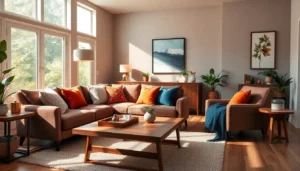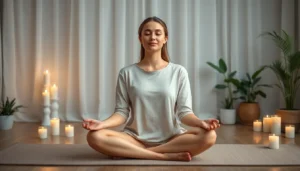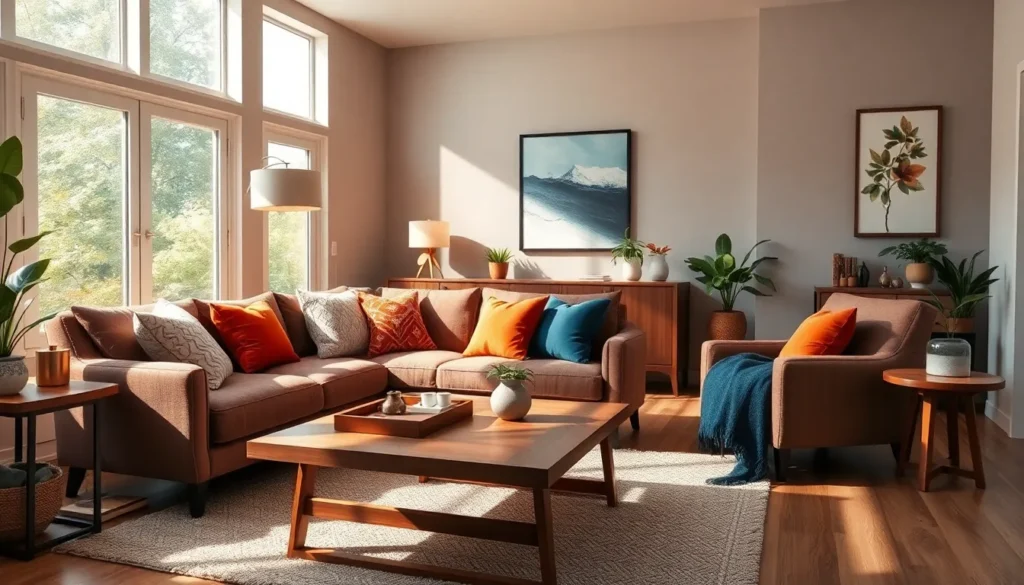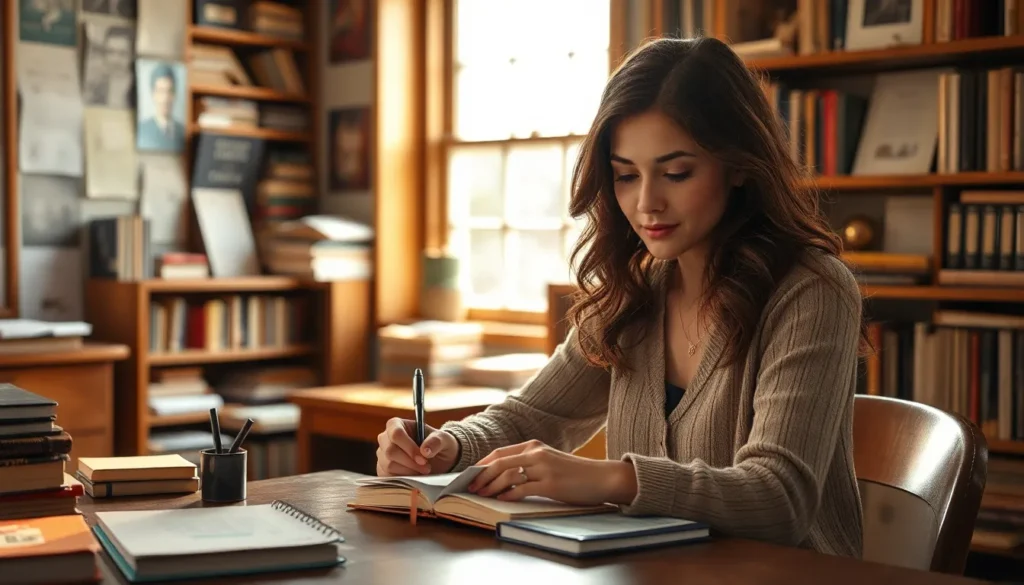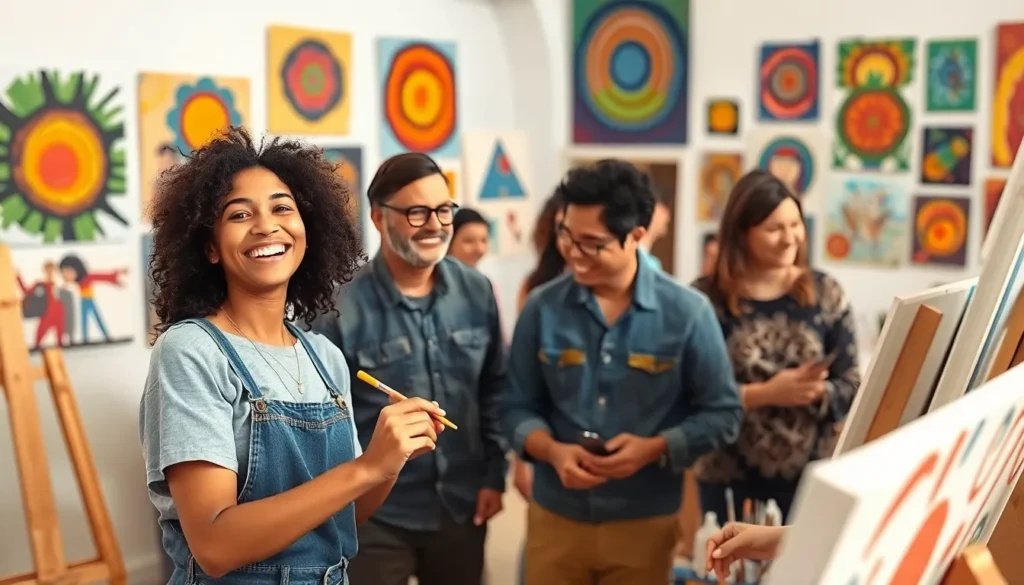Table of Contents
ToggleTransforming a space can feel like a daunting task, but it doesn’t have to be a battle of wills with your furniture. With the right interior design tips, anyone can turn their home from drab to fab without needing a degree in architecture or a trust fund. Whether it’s adding a splash of color or rearranging furniture like a game of Tetris, small changes can make a big impact.
Understanding Interior Design
Interior design blends aesthetics and functionality for creating inviting environments. Focusing on specific elements enhances overall living spaces.
Elements of Interior Design
Key elements include color, space, form, texture, and light. Color sets the mood and influences perception; it can energize or calm. Space involves the layout and flow within a room, determining how furniture interacts. Form defines the shapes and structure of furniture and decor, contributing to visual interest. Texture adds depth through materials like fabrics and finishes, creating tactile experiences. Light plays a crucial role, affecting ambiance and highlighting features.
Importance of Functionality
Functionality ensures spaces meet the practical needs of occupants. Layout impacts movement and accessibility, allowing easy navigation. Multi-use furniture optimizes space efficiency, maximizing limited areas. Storage solutions help reduce clutter and maintain organization. Additionally, personalizing spaces reflects individual lifestyles, enhancing daily experiences. Balancing aesthetic appeal with practical use creates harmonious environments where beauty and function coexist.
Color Schemes and Palettes

Selecting color schemes and palettes plays a crucial role in interior design. Thoughtful combinations can transform a space, creating an inviting atmosphere.
Choosing the Right Colors
When choosing colors, individuals should consider the purpose of each room. Cool colors like blue and green offer a calming effect, while warm colors like red and orange promote energy. Neutral colors like beige or gray provide balance and versatility. It’s essential to test colors by sampling them on walls before committing. Observation of how different shades look in varying light conditions also contributes to informed decisions. Harmonizing colors can enhance cohesion and aesthetics across rooms.
Impact of Colors on Mood
Colors significantly influence mood and emotions. For example, blue often evokes feelings of tranquility, making it ideal for bedrooms. Yellow tends to inspire happiness and cheerfulness, suitable for kitchens or playrooms. Green is associated with nature, promoting relaxation and well-being. Color intensity also affects mood; bright shades can invigorate, while muted tones offer calm. Understanding these effects enables the creation of environments suited for their intended emotional impact. Balancing colors within a design can lead to a harmonious and uplifting atmosphere.
Furniture Selection
Selecting the right furniture significantly influences the overall design of a space. Careful choices lead to enhanced aesthetics and functionality.
Types of Furniture
Furniture types play a crucial role in defining a room’s character. Chairs, tables, couches, and storage solutions all contribute uniquely to the environment. Sofas provide comfort, while accent chairs add style. Dining tables invite gatherings, and storage pieces keep spaces organized. Modular furniture offers versatility and adapts to changing needs. Different materials like wood, metal, and upholstery influence both look and feel. Each selection contributes to the overall atmosphere, balancing comfort and practicality.
Space Planning Considerations
Effective space planning optimizes furniture placement and enhances usability. Consider the dimensions of your room when selecting furniture dimensions. Traffic flow matters; maintain clear pathways for seamless movement. Zone areas to create distinct functions, such as dining, relaxing, or working. Position larger items against walls to maximize open space. Multi-purpose furniture, like sofa beds or extendable tables, adds flexibility. Assess lighting needs, ensuring that key areas are well-lit with both natural and artificial sources. Thoughtfully planned furniture arrangements transform spaces into inviting, functional environments.
Lighting Techniques
Lighting significantly influences the overall ambiance of a space. It transforms aesthetics and enhances functionality.
Natural vs. Artificial Lighting
Natural light boosts mood and energy levels. It penetrates through windows and enhances color perception. Positioning mirrors across windows can reflect sunlight, increasing brightness. Sheer curtains allow light flow while maintaining privacy. On the other hand, artificial lighting complements natural lighting and provides versatility. It includes lamps, sconces, and overhead fixtures, all serving specific tasks. Adjusting the type of artificial light based on activities optimizes brightness. Dimmers allow for light intensity adjustments, catering to various moments throughout the day.
Importance of Layered Lighting
Layered lighting combines different lighting types for an effective design. Overhead fixtures provide general illumination, while task lighting focuses on specific tasks like reading or cooking. Accent lighting highlights artwork and architectural features, creating visual interest. Mixing these layers prevents uninviting flatness in a room’s atmosphere. The right balance of light levels creates depth and dimension within spaces. Strategically placing fixtures in different heights enhances the overall appeal. A well-planned lighting scheme fosters functionality and elevates the mood, making it essential in any interior design project.
Personalizing Your Space
Personalizing a space enhances comfort and expression, making it uniquely yours. Thoughtfully incorporating individual style influences the overall atmosphere of the home.
Incorporating Personal Style
Personal style reflects individuality and preferences. Selecting colors, patterns, and materials that resonate with personal tastes can create a distinctive ambiance. Mixing established decor styles, such as modern and vintage, achieves a cohesive look. Integrating handcrafted items or art pieces fosters a meaningful connection to the environment. Showcasing travel souvenirs or family heirlooms imbues the space with character. Experimenting with different layouts can also unveil unique arrangements that highlight personal style.
Importance of Accessories
Accessories play a vital role in defining a space’s identity. Strategic placement of items like rugs, pillows, and artwork can elevate the overall design. Incorporating personal memorabilia enhances sentimental value in the environment. Layering textures with throws or decorative sculptures adds dimension to the room. Essential accessories include vases, books, and candles, which create focal points. Selecting pieces that resonate emotionally also provides a sense of belonging. Balancing colors and textures in accessories further enriches the visual narrative.
Transforming a living space doesn’t have to be daunting. With the right interior design tips anyone can create an inviting and functional environment. By focusing on color schemes furniture selection and effective lighting individuals can enhance both the aesthetics and usability of their homes. Personal touches and thoughtful arrangements play a crucial role in making spaces feel unique and comfortable.
Ultimately it’s about finding the perfect balance between beauty and practicality. Embracing these design principles empowers anyone to cultivate a home that reflects their personality while enhancing daily living experiences. With creativity and intention every room can become a harmonious sanctuary.

